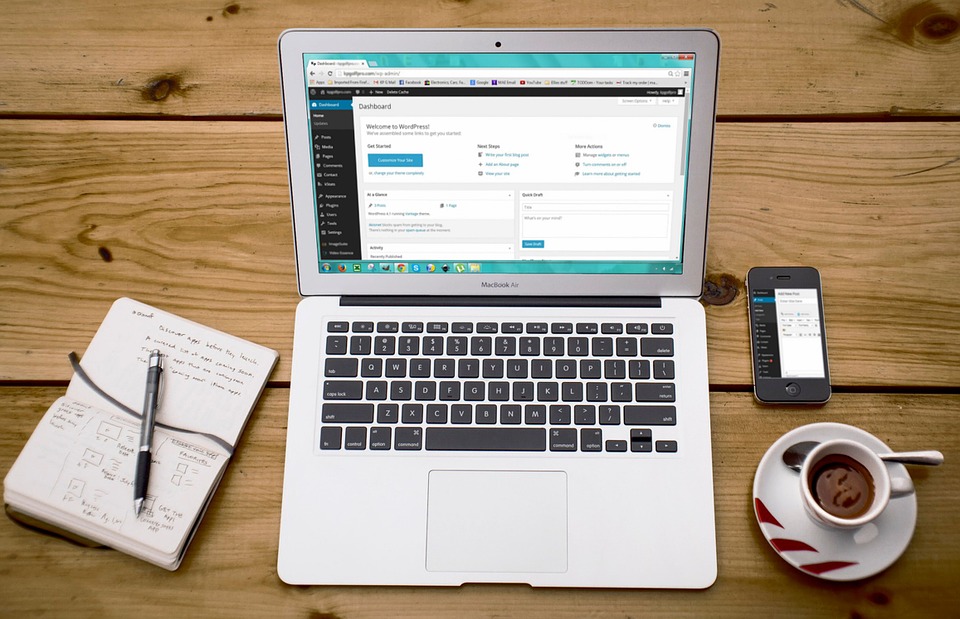No matter what people tell you, one thing today is certain – WordPress is the most widely used Content Management System (CMS). And if you are not yet using it, you should start as soon as possible. There are many benefits of using WordPress, but with that comes a certain level of risk. Like any quality software, you need to take the necessary precautions to protect your website. This is why we decided to tackle ways to help secure your WordPress website.
10 simple guidelines to help secure your WordPress site
Just like any popular software, there is a certain amount of negative attention it attracts – the type that involves hacking, malware, viruses etc. This is all the more reason to establish safety protocols to help protect your website. Software for moving companies is just as open to attacks as any other type of software.

And one thing you don’t want is your official website to be suspended due to malware-hosting or virus emails. Not only can this end up costing your company a lot financially, but it can destroy your reputation overnight. It takes weeks of time and effort to restore a website from that, but it takes years for a recognized moving company brand to recover from that. And this is without even considering a high-risk label you might get from Google.
However, we are confident that the following ten tips can help secure your WordPress website and prevent any of this from ever happening:
Tip #1 – Two-Factor Authentication Login
Using two-factor authentication (2FA) to access sensitive information, websites, databases is one of the simplest, yet most effective ways of protecting your website. You can’t even imagine how much that additional layer of security can change the game in terms of security.
The way it works is that in order to gain access to certain information or parts of your website, you need to provide additional proof of ID. This is most commonly a mobile-generated code or an answer to a question. WP Google Authentication plugin is an excellent example of a 2FA plugin that can easily be installed to secure your site’s login.
Tip #2 – Implementing Login Limits
This is a logical step that you can find even in the simplest of games or puzzles. By limiting the number of login attempts, you can easily prevent hackers from testing out countless combinations of codes and passwords to access your site. Thus, you have a locking mechanism to help secure your WordPress website, starting from the login page. And this is why we have the WP limit login plugin in place. It allows you to block out any IP address that gathers too many failed login attempts.
Tip #3 – Change Admin Login URL to secure your WordPress website
Instead of using the default admin login set, that is either /wp-admin or wp-login.php, try going for something less predictable. It can be a minor change, like /wp-login.php? or my_login.php, etc. When it comes to the tool that can help you do this, the iThemes security plugin is a comprehensive security plugin that allows you to do this.
Tip #4 – Make Your Passwords Secure
At this point, you’re probably thinking – well, this is just common knowledge. And we couldn’t agree more, yet you would be amazed at how little thought people put into thinking of a good password. With the development of social media and search engines, it’s easy for people to discover your mother’s maiden name or the name of your first pet, your favorite car, etc. And these are all examples of commonly used passwords that people create.

So, consider either creating a password using a password generator tool. Or you can take the time to create your own combination of lowercase, uppercase, special characters, and numbers for your password. Try to make your password at least 10 characters long using the above combination. By doing this, you’ll definitely secure your WordPress website in the best way possible. And this is something you should force all users of your website to do.
Tip #5 – Password-Protect the WP-Admin Directory
The WP-Admin directory is the most important one on your WordPress website. After all, it offers the user complete control over the website. So, it is only natural that you would want to add an extra layer of security to it. The AskApache Password Protect plugin is a very useful tool for such a step.
Tip #7 – Switching to HTTPS (SSL/TLS)
Real-time or online, data can be intercepted unless you take necessary precautions. This is why you need to switch to an HTTPS protocol. We wrote about this and concluded that this is definitely one of the all-important security methods you can take.
And the easiest way to accomplish this is with the introduction of an SSL certificate. Not only can it help secure your website, but it can also improve your SEO standards. So, as well as better security, you get a better ranking on search engines!
Tip #8 – Actively Monitoring WordPress Files
If it were to happen that you fail to secure your WordPress website and someone gains access to your data, knowing about it as soon as possible becomes essential. Hence, you need plugins like Wordfence. These tools can monitor your WordPress files to track any changes made to them and notify you. In fact, if you are focused on an ideal security measure, Wordfence is definitely the plugin to consider, as it offers:
- live security scanning & monitoring;
- intrusion detection;
- various prevention features.
Tip #9 – Perform Regular Back-Ups
The tips we offer here aim to ensure that your website is absolutely safe. However, in case an intrusion does occur in spite of everything, you don’t want to risk losing all your data due to several infected files. Instead, what you want to do is ensure that you conduct regular back-ups of your website.
If you follow the tips in this post, your website will have a minimal chance of getting hacked. However, if an attack does happen, the last thing you want is to have to start from scratch. It can be hard to try to work out how to remove any infected files and make your site safe again. There are various WP plugins that can ensure that even if you were to lose your files, you could still restore your website form previous working copies.
Tip #10 – Keep WordPress and Its Plugins Updated

With the constant advancement of technology and software, it is a necessity to stay on top of things. Having an out-of-date version of WordPress or even some of the plugins is simply not something you want when looking at security features. The good news is that many plugins and WordPress itself (starting from version 3.7) have automatic update features. All you have to do is configure those updates on a specific time frame.
To summarize everything that we’ve said here today
So, having gone through all these guidelines, you can see that this is not rocket science. These are simple steps that anyone can handle if you want to secure your WordPress website from hacking. Follow them, make them work to your advantage and you will enjoy a malware-free online experience, which benefits both your company and your customers.






